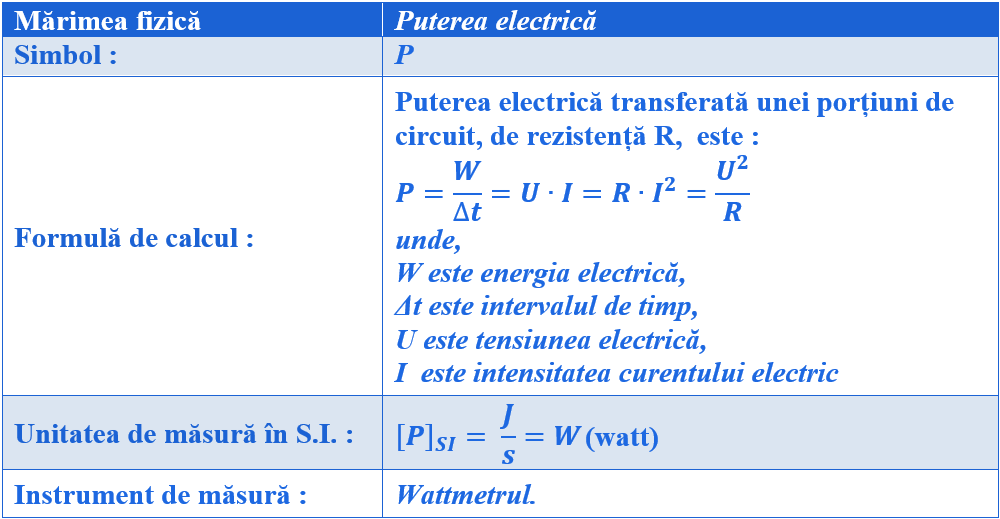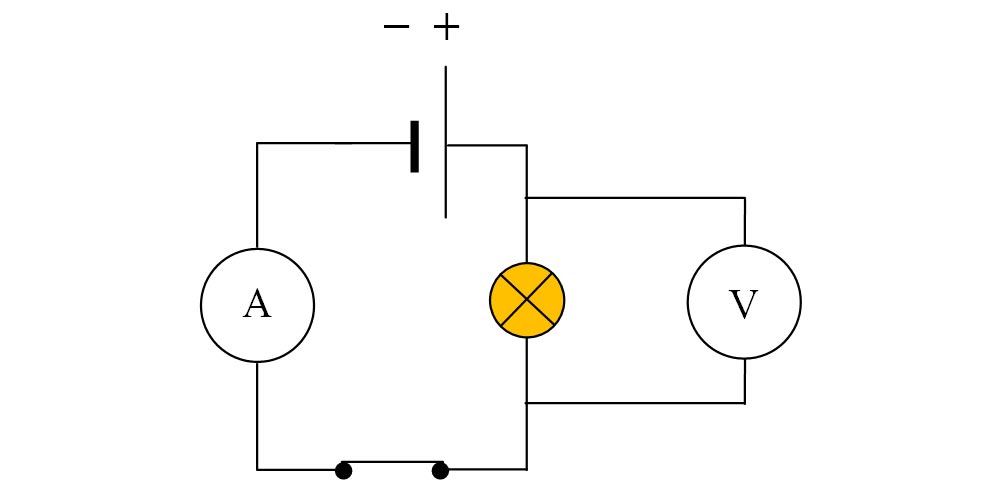II.10. Energia și puterea electrică
Energia electrică (notată cu W) a unei surse măsoară lucrul mecanic efectuat de aceasta pentru a deplasa sarcina electrică (q) prin secțiunea transversală a circuitului, într-un interval de timp (Δt):
W = L = E ∙ q
Dar q = I ∙ Δt (din formula intensității)
Wtot = E ∙ I ∙ Δt (energia consumată pe întreg circuitul).
Wext = U ∙ I ∙ Δt (energia consumată pe o porțiune de circuit).
Wint = u ∙ I ∙ Δt (energia consumată pe circuitul interior).
Caracterizarea energiei electrice ca mărime fizică:

Puterea electrică (P) este o mărime fizică ce măsoară viteza de transfer a energiei electrice.
Caracterizarea puterii electrice ca mărime fizică:

Materiale necesare:
O baterie de tensiune electromotoare egală cu tensiunea nominală a becului, un voltmetru, un ampermetru, un bec de 6,3 V, fire de legătură.
Descrierea experimentului:
- Realizează circuitul electric prezentat în imaginea următoare :

- Măsoară intensitatea curentului electric ce trece prin circuit și tensiunea electrică de la bornele becului.
- Calculează puterea becului înmulțind tensiunea aplicată la bornele becului cu intensitatea curentului ce trece prin bec.
P = U ∙ I (măsurată în W)
Concluzia experimentului:
Becul luminează normal când se respectă valorile nominale înscrise pe el ( Un, In și Pn ).
Valorile nominale inscripționate pe aparatele electrice sunt o pereche dintre valorile Pn, In, Un.
Pn = Un • In